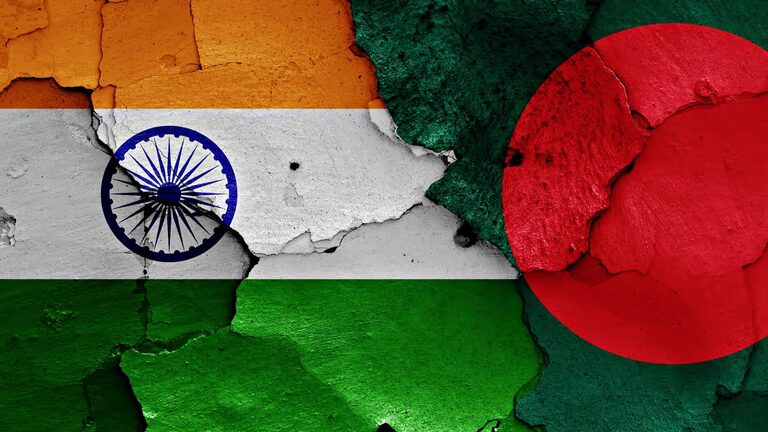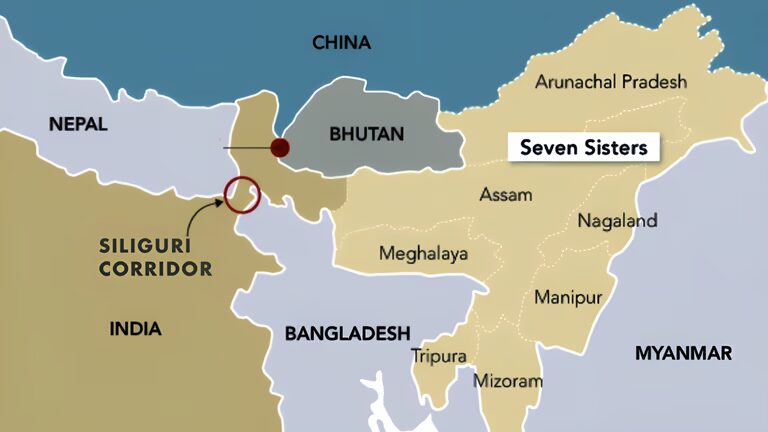
India and Bangladesh share a bond deeper than just borders. Rooted in shared history, cultural kinship and geographic proximity, the relationship between these two South Asian neighbours has long been considered a model of regional cooperation. India played a pivotal role in the birth of Bangladesh in 1971, standing with the Bengali population during their struggle for liberation from West Pakistan. Since then, bilateral relations have traversed several ups and downs but remained largely cooperative. However, recent developments, including concerns over the “Greater Bangladesh” theory, China’s creeping interference, and sensitive military manoeuvres have added fresh complexity to the dynamic.
ALSO READ- Balochistan: A Land of Culture and Political Complexity
A Strong Foundation with Growing Economic Ties-
India and Bangladesh have grown to become important trade partners, with India being one of the largest markets for Bangladeshi goods. India has extended lines of credit worth billions of dollars to Dhaka and has collaborated on infrastructure, power and connectivity projects. Initiatives like the Maitree Express (Kolkata to Dhaka) and the BBIN (Bangladesh-Bhutan-India-Nepal) corridor exemplify India’s intent to deepen regional integration with its eastern neighbour.
Cultural ties also remain strong, with regular cross-border exchange of art, literature and cinema. Educational ties are robust as well, with many Bangladeshi students pursuing higher education in India. On the defence and security front, the two countries have cooperated extensively on counterterrorism, intelligence sharing, and curbing insurgency in India’s Northeast.
Yet, despite these collaborative efforts, certain recent developments have raised eyebrows in India and demand a careful and honest conversation.
Operation Face Wash: A Quiet but Strategic Move-
India has recently taken up a classified mission, known as “Operation Face Wash”, aimed at cracking down on illegal infiltrations across the India-Bangladesh border. This initiative stems from growing concerns that unchecked migration may not just alter local demographics but may also pose security risks.

From India’s perspective, this is not about targeting any community or nation but about maintaining internal security and sovereignty. Unregulated migration has economic, cultural, and political ramifications, and India must prioritise national interest while balancing diplomatic courtesy.
Bangladesh, for its part, often denies large-scale migration but the fact remains that porous borders and the ease of slipping through in rural stretches allow for unauthorised movement. India’s position is clear: border control is a sovereign right, and legitimate travellers from Bangladesh are welcome, but illegal entrants cannot be accommodated endlessly.
The “Greater Bangladesh” Theory: A Troubling Narrative-
One of the more sensitive and lesser-discussed topics in India-Bangladesh relations is the idea of “Greater Bangladesh.” This theory, while not officially backed by the Bangladeshi government, has been talked about in India for years.
The idea suggests that some radical elements, especially those influenced by groups like Jamaat-e-Islami, dream of expanding Bangladesh’s reach into parts of India — like Assam, West Bengal and other northeastern areas — by encouraging mass migration and changing the region’s demographics.
This theory traces back to the time after the 1971 war. Indian intelligence agencies and analysts from groups like IDSA have voiced concerns about the increasing number of illegal immigrants from Bangladesh. Many of them settle in Indian states, altering the population balance and sometimes causing social tension.
Some fear that this slow and steady demographic change could one day be used to demand land or special rights for Bangladeshi-origin populations in India. Though there’s no formal map or official plan behind “Greater Bangladesh,” the idea raises eyebrows and caution among Indian policymakers.
Recently, an alleged Turkish NGO-backed Islamist group has surfaced in Dhaka under the banner ‘Saltanat-e-Bangla’ and released a map advocating for a “Greater Bangladesh” that encompasses the whole Northeast area of India, Bihar, Jharkhand, Odisha and Myanmar’s Arakan State.
Again, it’s important to be fair — not all migrants are part of any political strategy. Many come simply seeking a better life. But it’s also fair for India to want clear and strong border controls to prevent illegal entry that could lead to long-term problems.
Mock Drills near the Siliguri Corridor-
Recently, On the 8th and 9th of May Indian Army conducted the ‘Teesta Prahar’ integrated field exercise at the Teesta Field Range in North Bengal near Siliguri Corridor, a narrow strip of land (also called the Chicken’s Neck) connecting mainland India to its northeastern states.
This corridor is critically important for India — geographically, it is just about 22 kilometres wide at its narrowest point, making it a chokepoint of national vulnerability.

One of the exercise’s main highlights was the deployment and validation of newly inducted next-generation armament systems, military platforms, and advanced battlefield technology. This exercise emphasised jointness, synergy, and seamless coordination, enhancing the army’s capacity to conduct operations quickly and efficiently in different terrains and severe weather. Tactical drills, battle rehearsals, and adaptive manoeuvres were also used to improve responses to dynamic combat scenarios.
China’s Interference: A Shadow Over South Asia-
China’s growing closeness with Bangladesh is another layer of concern for India. While Bangladesh has every sovereign right to build diplomatic and economic relationships with any country, India remains watchful of China’s strategic motives in the region.
Beijing has invested in Bangladesh’s infrastructure, defence, and telecommunications, including the construction of ports and the supply of military hardware. Recently the news also came out that China is going to build a military airbase in Lalmonirhat, Bangladesh. India suspects that these moves are not purely economic but are part of a larger geopolitical play — the same strategy that China has used in Sri Lanka and Pakistan through debt-trap diplomacy and military cooperation.
China’s attempts to gain influence in Bangladesh can potentially turn Dhaka into a pressure point in times of regional tension. India, having learnt hard lessons from its neighbours’ experiences with Chinese loans and surveillance infrastructure, rightly urges Bangladesh to tread carefully.
India’s Stand: Peaceful But Vigilant-
India continues to approach the relationship with Bangladesh with maturity and mutual respect. India has not retaliated aggressively or reacted with hostility despite provocations and sensitive developments. The focus remains on dialogue, development and diplomacy.
However, India is well within its rights to safeguard its borders, express concerns over foreign influence, and ensure that its northeastern corridor is not compromised. New Delhi has repeatedly emphasised that good neighbourly relations do not come at the cost of national security.
India’s people have welcomed Bangladeshis with open arms for decades, but that trust should not be stretched thin by geopolitical manoeuvring or silence on matters that affect India’s integrity.
The Latest Buzz: Garments and Trade Tensions-
A recent report talks about how India could gain over ₹1,000 crore by restricting the import of Bangladeshi garments. While this might help Indian manufacturers, it could also increase trade tensions.
India has to strike a balance here. Yes, protecting domestic businesses is important, but so is maintaining a healthy relationship with our neighbor. Economic cooperation, if handled well, can be a win-win.
Conclusion: Real Friendship Requires Real Conversations-
India and Bangladesh have an opportunity to be a shining example of South-South cooperation. With shared goals like poverty alleviation, climate resilience and regional peace, both nations can be stronger together. But for that to happen, tough conversations must be had.
India will persist in extending its friendship, but not at the expense of its national interests. As a regional power, India seeks stability in its neighbourhood — and that stability requires transparency, security cooperation and mutual respect.
The people of India stand by Bangladesh but also expect Dhaka to act responsibly — not allow its territory or policies to be exploited by larger powers or radical agendas. After all, a strong and secure India is in the best interest of Bangladesh too.
